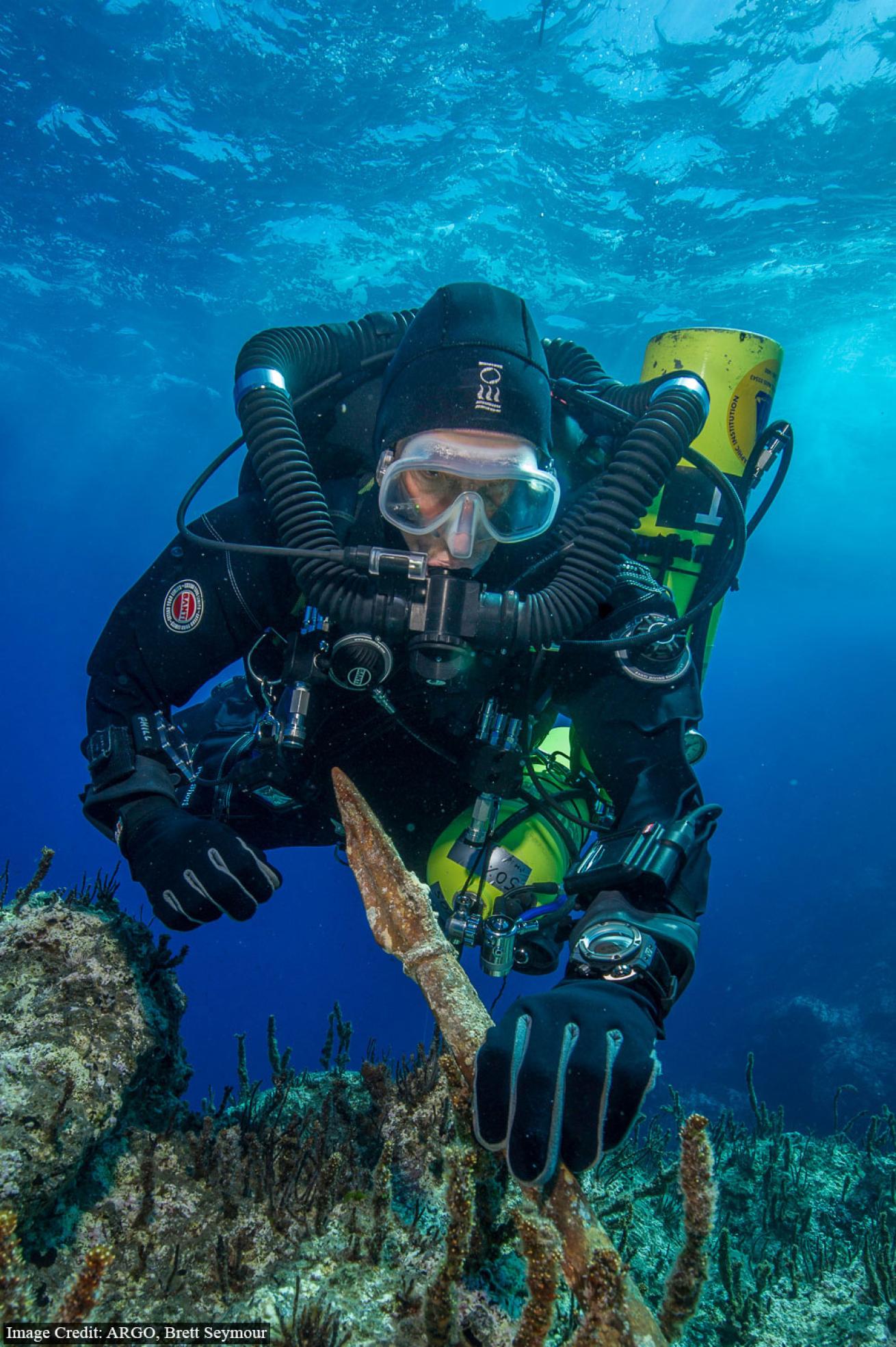Ancient Bronze Spear Discovered at Antikythera Shipwreck in Greece
The Return to Antikythera project announced the discovery of a bronze spear section that may have belonged to a "larger-than-life" statue, according to the most recent update on the project website. The 210cm (82 inches) section was pulled from the site as a result of fieldwork exploration in September of this year, and appears to be a part of a statue that may still also be at the wreck.
The Antikythera wreck was discovered by sponge divers in 1900 and it's contents partially salvaged over the course of the following year. It was also visited in 1976 by undersea explorer Jacques Cousteau and the Calypso crew, who filmed a television show Diving for Roman Plunder about their exploits, along with the retrieval of a number of other artifacts. But due to the depth of the dive site – approximately 45 meters (147 feet) – as well as poor weather conditions, recovery efforts have proven difficult.
In 2012, the Woods Hole Oceanographic Institution recieved permission to began surveying the site again with SCUBA rebreathers. They also partnered with JF White Contracting to utilize the Exosuit – an underwater diving suit that can withstand depths of 300 meters (1000 feet). The results of these recent dives have already yielded great news with the announcement of the spear discovery. The following project goals were also announced completed:
a. Creating a highly detailed map of the site, which will act as a blueprint on which future finds and work can be charted
b. Completing a metal detector survey of the site
c. Gaining a better understanding of how the wreck lays, and where major features (such as the cargo area) may be located
d. Recovering a few select objects and sediment samples for analysis
e. Testing new technology for use in deep water archaeology, such as the Exosuit
====
For more information on the "Return to Antikythera" project, visit: http://antikythera.whoi.edu/about/
9 October 2014 update from WHOI: http://antikythera.whoi.edu/2014/10/09/part-of-a-statue-found/
Announcement of Academic Event to discuss more details on the recent discovery: http://www.laskaridou.gr/eng/article.php?view=423
Press Release (in Greek): http://www.yppo.gr/2/g22.jsp?obj_id=58772

ARGO, Brett SeymourSection of a bronze spear recovered that would have belonged to a larger-than-life statue.
(Image Credit: ARGO, Brett Seymour)
The Return to Antikythera project announced the discovery of a bronze spear section that may have belonged to a "larger-than-life" statue, according to the most recent update on the project website. The 210cm (82 inches) section was pulled from the site as a result of fieldwork exploration in September of this year, and appears to be a part of a statue that may still also be at the wreck.

ARGO, Brett SeymourMetal detector survey of the shipwreck area.
(Image Credit: ARGO, Brett Seymour)
The Antikythera wreck was discovered by sponge divers in 1900 and it's contents partially salvaged over the course of the following year. It was also visited in 1976 by undersea explorer Jacques Cousteau and the Calypso crew, who filmed a television show Diving for Roman Plunder about their exploits, along with the retrieval of a number of other artifacts. But due to the depth of the dive site – approximately 45 meters (147 feet) – as well as poor weather conditions, recovery efforts have proven difficult.

ARGO, Brett SeymourExosuit was deployed as an new tool for deep water archaeology.
(Image Credit: ARGO, Brett Seymour)
In 2012, the Woods Hole Oceanographic Institution recieved permission to began surveying the site again with SCUBA rebreathers. They also partnered with JF White Contracting to utilize the Exosuit – an underwater diving suit that can withstand depths of 300 meters (1000 feet). The results of these recent dives have already yielded great news with the announcement of the spear discovery. The following project goals were also announced completed:
a. Creating a highly detailed map of the site, which will act as a blueprint on which future finds and work can be charted
b. Completing a metal detector survey of the site
c. Gaining a better understanding of how the wreck lays, and where major features (such as the cargo area) may be located
d. Recovering a few select objects and sediment samples for analysis
e. Testing new technology for use in deep water archaeology, such as the Exosuit
For more information on the "Return to Antikythera" project, visit: http://antikythera.whoi.edu/about/
9 October 2014 update from WHOI: http://antikythera.whoi.edu/2014/10/09/part-of-a-statue-found/
Announcement of Academic Event to discuss more details on the recent discovery: http://www.laskaridou.gr/eng/article.php?view=423
Press Release (in Greek): http://www.yppo.gr/2/g22.jsp?obj_id=58772










